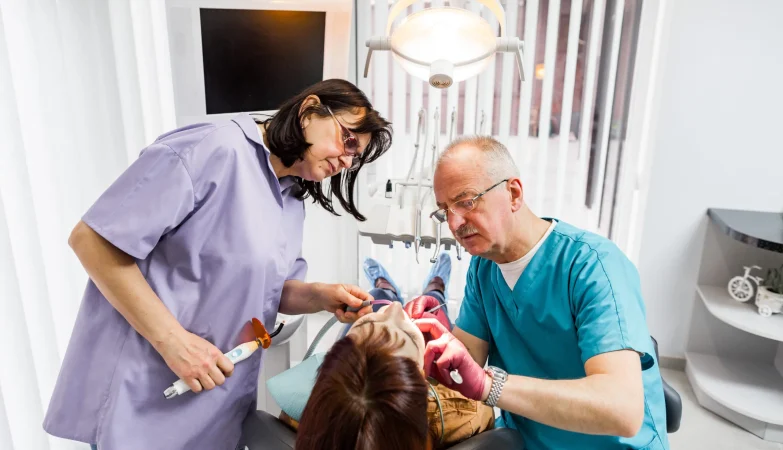You know the drill. You’ve perfected your skincare routine. You’re cleansing, toning, moisturizing. Your face is finally starting to clear up. And then… a fresh crop of pimples appears along your hairline, your temples, even on your back and chest. It’s frustrating, to say the least.
Well, here’s the deal: your hair care products might be the sneaky culprits. It’s a classic case of what we’ll call “hair-grade acne.” The very stuff that makes your hair shiny and bouncy can clog the pores on the surrounding skin, leading to breakouts. But don’t worry, you don’t have to choose between great hair and clear skin. Let’s dive into the world of acne-friendly hair care.
Why your shampoo could be causing pimples
Think of your skin’s pores like tiny drains. Certain ingredients in hair products are like pouring thick, goopy sludge down those drains. They get clogged. Inflammation follows. And bam, you’ve got a breakout.
The main offenders are often:
- Sulfates: Harsh detergents that can strip your skin and hair of natural oils, causing irritation and, ironically, more oil production as your skin tries to compensate.
- Silicones: Ingredients like dimethicone create a slick, smooth feel but can form a plastic-like film over your skin, trapping dirt, oil, and bacteria.
- Heavy Oils and Butters: Coconut oil, cocoa butter, and shea butter are fantastic for moisturizing dry hair, but they’re highly comedogenic (pore-clogging) for many people.
- Synthetic Fragrances: These are a common source of skin irritation and allergic reactions, which can manifest as redness and acne.
What to look for in breakout-safe hair products
Okay, so what should you be putting on your head? The goal is to find products that are effective yet lightweight and non-comedogenic. Honestly, it’s less about a single miracle ingredient and more about a clean, thoughtful formulation.
Shampoo & Conditioner: The Dynamic Duo
Your shampoo and conditioner are the foundation. Because they rinse over so much of your skin, they’re the most critical players in preventing hair-grade acne.
Look for labels that say “oil-free,” “non-comedogenic,” or “non-acnegenic.” These are formulated specifically to avoid pore-clogging ingredients. Brands designed for sensitive skin are also a great bet, as they typically avoid common irritants like sulfates and heavy fragrances.
Key ingredients to embrace: Salicylic acid (a beta-hydroxy acid that exfoliates inside the pore), tea tree oil (a natural antibacterial), and hyaluronic acid (provides lightweight moisture without heaviness).
Styling Products: The Sticky Situation
This is where it gets tricky. Pomades, gels, mousses, and hairsprays are designed to stay in your hair. And when they migrate onto your skin, they can really wreak havoc.
Avoid anything overly sticky, greasy, or waxy. Water-based styling products are your new best friend. They tend to be lighter and wash out more easily than oil-based or alcohol-based alternatives. And for heaven’s sake, try to keep them off your scalp and skin as much as possible. Apply them to your mid-lengths and ends.
A simple routine for acne-prone skin
Switching products is one thing, but a few tweaks to your routine can make a world of difference. It’s about building habits that create a barrier between your hair products and your skin.
- Wash your face last. This is the golden rule. After you’ve conditioned and rinsed your hair, give your face, neck, and hairline a final, thorough cleanse. This ensures you wash away any residue left behind.
- Keep your hair off your face. When you’re sleeping or working out, pull your hair back into a loose ponytail or bun. A silk or satin pillowcase can also help reduce friction and irritation.
- Be mindful of your shower water. Super hot water can strip your skin of its natural barrier, making it more susceptible to irritation from product runoff. Lukewarm is the way to go.
- Clean your tools—and your hands. Your hairbrush, headbands, and even your own hands can transfer oil and product back onto your skin. Clean them regularly.
Product recommendations: A starting point
Navigating the haircare aisle can be overwhelming. To make it easier, here’s a quick look at some general types of acne-friendly products. Remember, what works for one person might not work for another—it’s all about finding your own holy grail.
| Product Type | What to Look For | Why It Helps |
| Clarifying Shampoo | Sulfate-free, with salicylic acid or tea tree oil. | Deep cleanses without harsh stripping; helps exfoliate the scalp and skin. |
| Lightweight Conditioner | Oil-free, silicone-free, labeled “non-comedogenic.” | Hydrates hair without leaving a heavy, pore-clogging residue. |
| Water-Based Leave-In | Clear, gel-like consistency; avoid creams. | Provides moisture and hold without the grease. |
| Scalp Treatments | With ingredients like glycolic acid or witch hazel. | Targets buildup at the source, preventing it from traveling to your skin. |
The final rinse
Clearing up breakouts caused by hair products is a journey of awareness. It’s about paying attention to the labels, listening to your skin, and making small, smart adjustments. You don’t need a dozen new products—just a more strategic approach to the ones you use.
Your skin and your hair are connected, more than we sometimes realize. Finding that balance where both can thrive? Well, that’s the real goal. It’s not just about avoiding pimples; it’s about cultivating a routine that respects the needs of your whole body.








